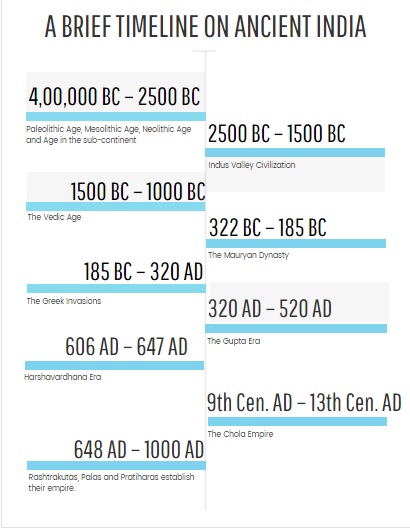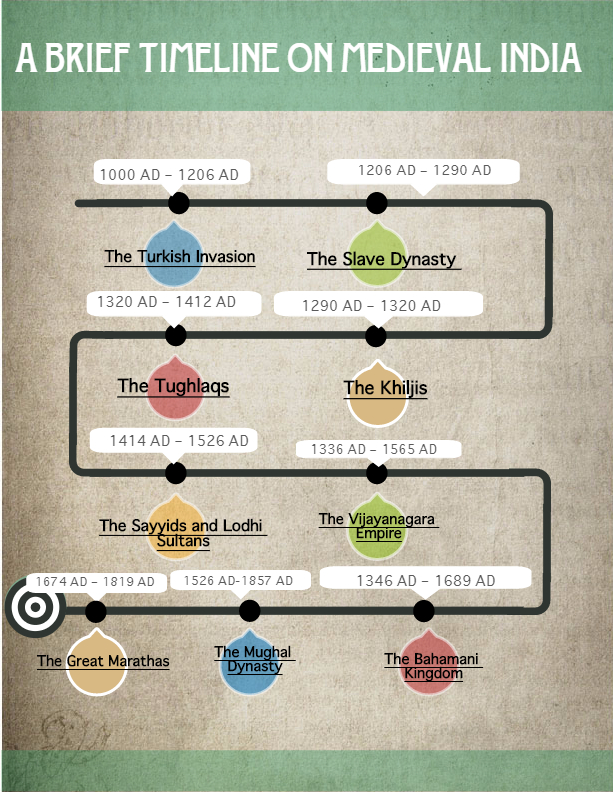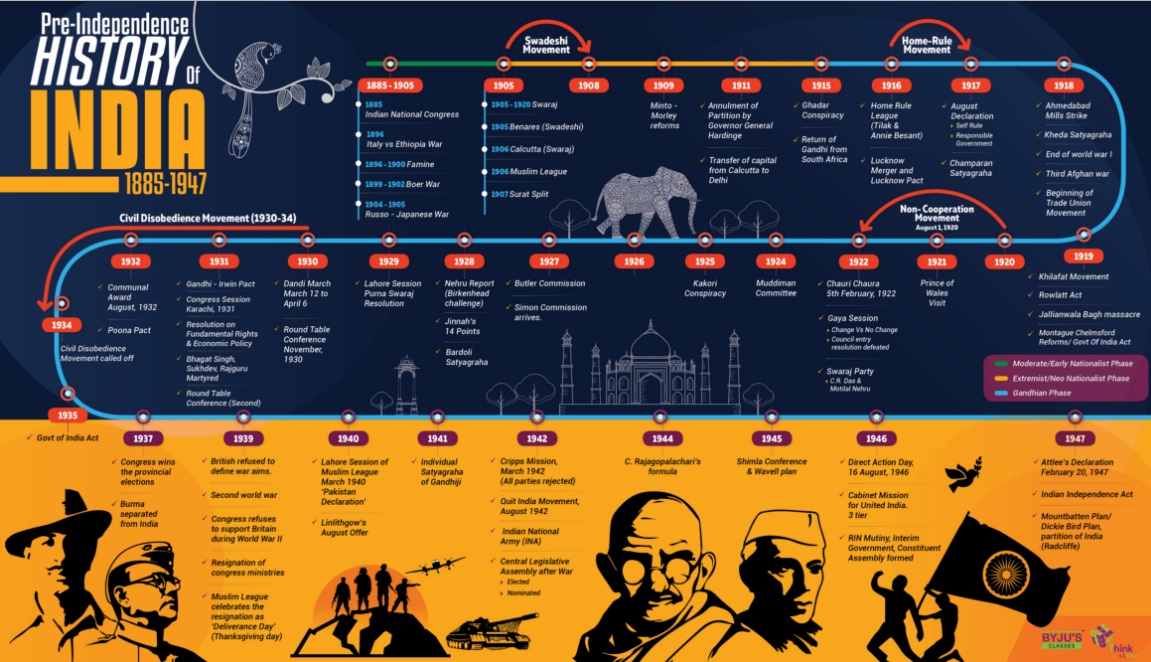Here are some tips and tricks on how to read history forUPSC Civil Services Prelims Exam 2021. The article covers the area to focus in Ancient India, Medieval India, and Modern India as well as on how to create history timelines for the IAS Exam preparation.
How to start History for UPSC exam?
The first step in starting any subject is to go through the UPSC syllabus for that subject.
DownloadFree UPSC History Notes For Prelims
The General Studies paper of Civil services preliminary exam comprises of Polity, Geography, Economy, History, General Science and Current Affairs. Both Indian History and culture are correlated and vast subjects. The Indian History and culture are considered as the significant part of both the Civil Services Preliminary Exam and the Main Examination 2021. A substantial segment of the total questions asked in General Studies Paper I for IAS exam come from Indian History that blended with culture. A judicious assortment of hard work and the right strategy will ease the history preparation. Here we are sharing the best strategy for how to study history for UPSC.
The history is divided into three parts. They are:
- Ancient India
- Medieval India
- Modern India for UPSC
The three segments carry a substantial amount of weightage in both UPSC prelim and mains examination. Along with these segments culture also plays a prominent role. It has been attaining a lot of mileage nowadays. The subject itself has a plethora of facts and date.
Before getting in detail, let’s take a look at the important reference books for history. Below given is a list of recommended books which candidates can refer for their UPSC 2021 Prelims Test Series.
Books for Indian History
Detailed reference books for Indian History
- India’s Ancient Past – R.S. Sharma (For Ancient Indian History)
- History of Medieval India – Satish Chandra (For Medieval Indian History)
- India’s Struggle for Independence – Bipan Chandra.
- A Brief History of Modern India – Spectrum (History)
- History of Modern India – Bipan Chandra
Read through to know the tips and tricks to cover the history syllabus for UPSC civil services prelims exam.
Ancient India
- Prehistoric Period
- Indus Valley Civilization
- Vedic Period
- Kingdoms and Empires of Ancient India
Basic Reading
For Ancient India, it highly recommended reading the NCERT below mentioned. In past years UPSC has asked questions directly from this area. There are a lot of terms mentioned in this textbooks and UPSC has grabbed the same for compiling question paper. You can also check the Ancient History notes page link provided after this section.
- Class VI Ancient India (Old)
- Class XI Ancient India (Old)
Focus areas – Ancient India
The Ancient History begins from the initial period to the mid of 8th Century AD. The aspirants should focus the different periods like Stone Age, Palaeolithic Age, Mesolithic Age, Neolithic Age and Chalcolithic Age. They should know about the major changes that happened in those periods.
The next area is the Indus Valley Civilization or the Harappan Civilization. The aspirants should focus on the way of life of people during this period. They should analyse it in Socio-Economic-Cultural facets. Along with that candidates would be able to know the Harappan sites and its significance. They have to focus on Art, Crafts- seals. Script and language used during Indus valley civilization.
In Vedic period, the candidates should have a basic knowledge about Society elements like family, marriage, and caste system etc. It is very essential to know the differences between Early and Later Vedic Society and lifestyles followed by people. They should focus on the religious, political and economic set up in that period. The Vedic period is famous for its literature. Aspirants should know about the Vedas, Upanishads, Dharma Shastras, Puranas and Six systems of Philosophy.
Nowadays the UPSC is coming with several terms and their meanings like Eripatti, Purohita, Jana and Panchayattan. So while preparing for Indian history aspirants should note down these kinds of terms with their meaning.
The ancient period has witnessed the emergence of so many religions. The two major religions developed in that period are Buddhism and Jainism. The teachings, Philosophy, Literature, belief of two religions have to be studied in depth.
The kingdom and rulers of ancient India is also an important area. One should know about the name of the ruler, his kingdom, his major reforms, and their contribution to the society, art and culture etc. UPSC has asked lots of question from the Mauryan and Gupta reign. In this scenario, the Mauryan and Gupta periods are still relevant topics in IAS Exam.
Timeline for Ancient India

Aspirants can get Ancient History Notes from Here.
Medieval India
The Medieval History starts from the mid of 8th Century to the beginning of 18th Century AD. The questions from Medieval History are limited, not like Ancient and Modern History. From 2011, UPSC has asked only 1- 4 questions from this area. But we cannot avoid this portion in the name of an emerging trend. UPSC is always unpredictable and it can come up with surprise in the coming year also. Several aspirants avoid this section, but you can smartly focus on definite topics.
- Religious movements
- Rulers and their reign
- Art and Architecture
Basic reading for Medieval India
The NCERT textbooks mentioned below are very helpful sources for the basic reading Medieval India. The story of civilization also gives some information about Medieval Indian History.
- Class VII Medieval India (Old)
- Class XI Medieval India (Old)
- Class IX Story of Civilization Part-I (Old)
- Class X Story of Civilization Part-II (Old)
Focus areas- Medieval India
Medieval India is comprised of the Mughal, Vijayanagar Empire, Sultanate rulers this area is very interesting and loaded with numerous facts like other periods. One has to focus on the Political, Social, Economic setup during their rule. Along with that one has to be thorough with the rise and fall of the empires.
The period had also witnessed religious movements like Sufi and Bhakti Movements. So, aspirants should focus this area with their important saints, their doctrines and impact on society.
Apart from that, one has to focus on the art and culture area. The medieval Indian had witnessed the birth of several buildings and sculptures. Aspirants should give special attention to this area specifically during Mughal rule.
Timeline for Medieval India

Aspirants can get Medieval History of India Notes for UPSC
Modern India
The modern Indian history talks about the period of the emergence of a foreign power in India till freedom struggle. The bulk of the questions comes from Modern Indian history for both prelims and mains examination. It will be sensible to organize the topics sequentially and unit-wise. We can divide the “Modern India” segment into several parts which will help you know how to study history for UPSC.
- Rise of the foreign power in India
- Emergence of East India Company and related events
- British takeovers and reactions from Indians
- British economic policy
- Socio-cultural facets
- Freedom struggle and independence
Focus areas-Modern India
In recent times there are lots of questions are asked from this area. Aspirants should concentrate in the Freedom struggle and independence area. They should know about the different movements, the purpose, and consequences of movements, personalities behind the movement etc. Aspirants should also focus on the role of Literature and Press. One should jot down the ‘chronology’ of the most important Movements and Missions lead by the British to gain the backing of the Indians and expand their administration.
History is loaded with full of facts and figures. Candidates should know about the Governors-General and viceroys, the reformation brought by them. Along with that aspirants should also focus on the different Acts, provisions and their impact on Indian society. The topics like Political-Administrative organization system by British, Socio-Economic arrangement like Permanent Settlement, Major Reports, Sessions, Acts, and Committees set up during the British reign are also important in IAS exam.
Religious and Social Reform Movements also play an important role from the exam point of view. The impacts of social reforms on Status of Women, Caste system, Education, of the society are considered as an important area for IAS Exam.
Timeline for Modern India

Aspirants can get Modern Indian History Notes for UPSCin the linked article.
Previous year Question from Modern India
- With reference to the Indian freedom struggle, Usha Mehta is well-known for: (UPSC Civil Services Preliminary Exam- 2011)
- Running the secret Congress Radio in the wake of Quit India Movement
- Participating in the Second Round Table Conference
- Leading a contingent of Indian National Army
- Assisting in the formation of Interim Government under Pandit Jawaharlal Nehru
Answer: A
Self-assessment
For any examination self-evaluation is essential. After completing each portion candidates should practice previous years question papers. Once the preparation is done, it is highly recommended to join a mock test series for self-evaluation.
Revise, Recall and Revise Again!
Revision is considered as an essential part of learning. This will enhance your memory power and help to retain the information during the examination. Along with reading and studying, one should be able to revise and retain the information you gathered. One should prepare short notes and jot down the important points. This will help you in last-minute revision.
Be the first one to comment





